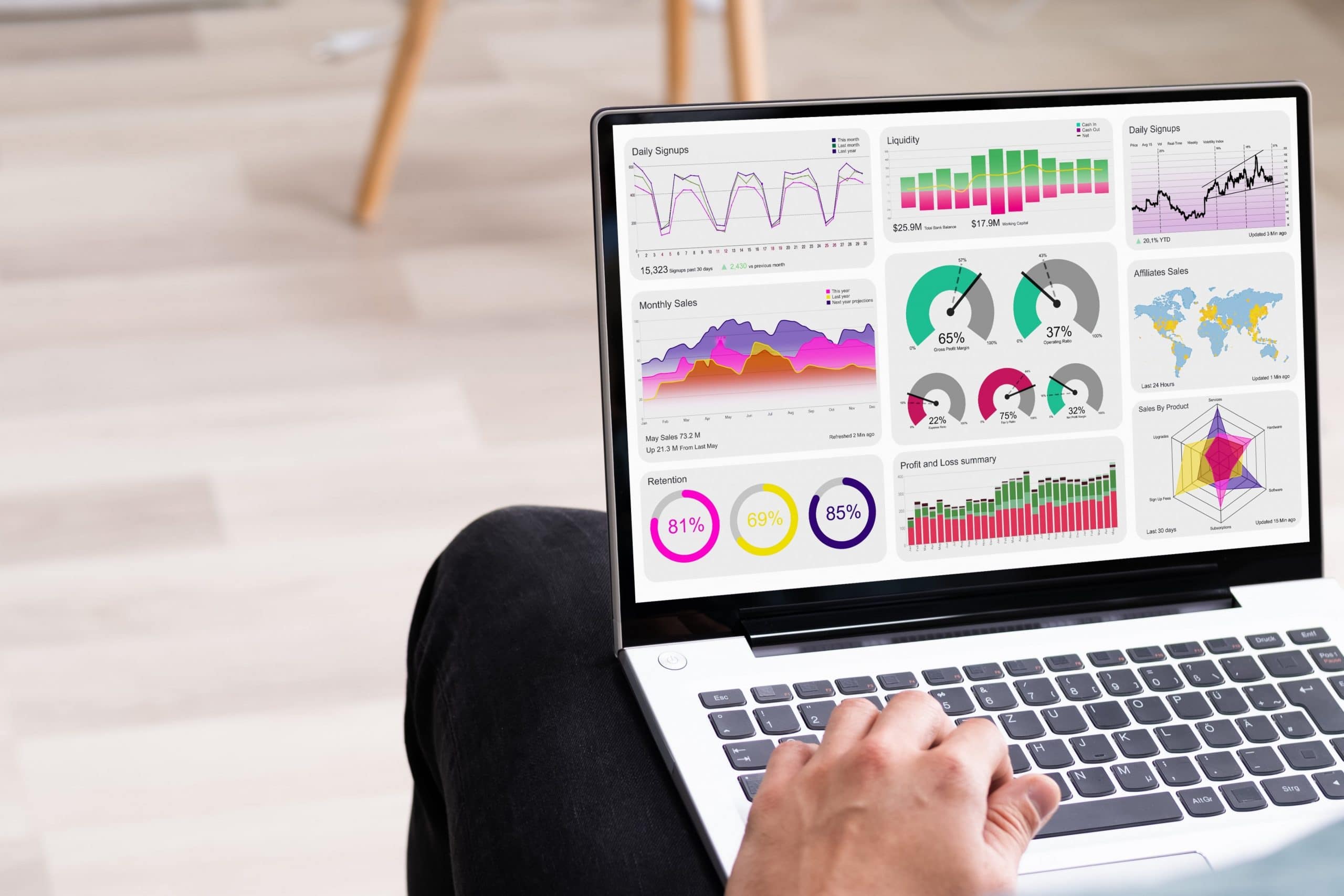The Future of Data Analytics Goes Beyond Analysis
How actionable insights are revolutionising data analysis
The future of ‘big data’ isn’t about the volume of data available — it’s about the availability and accessibility of data-driven outcomes. ‘Big data’ is mature. The information that businesses need to make informed decisions is out there. The problem is collecting, cataloguing and sorting the information that exists, and then putting it to use to drive meaningful outcomes.
Businesses need the ability to sort through the data quickly and find answers while the data is still relevant. You can’t do this without tools to go beyond the standard data analysis journey and take you through the discovery, action-planning and implementation of insights journey.
Data analytics has become an integral part of the way businesses operate, but like all things, best-practice data analytics is constantly evolving. As competitors start making meaningful impacts on their businesses from data analysis and actioning, you will be left behind. This type of “snowball-trend” can easily overwhelm, but equally provides a competitive advantage and opportunity if you can get out in front.
At Loop, we are at the forefront of delivering this outcome — and we created Loop specifically to solve problems with business intelligence, and connect the dots between analysis and outcomes. The key is to formulate actionable insights from your data sets. Here, we are going to explain how to go beyond analysis and use data analytics to drive real commercial outcomes while exploring the trends that will shape the future of business decision-making. Let’s get started.
Further reading: If you want to learn more about how to use Loop to transform outcomes, check out our free resource — The Data Playbook
Insights vs analysis
“Big data” used to feel like the change that companies had been waiting for. But with an average 75% of that data doing absolutely nothing, the promised revolution that data would bring was not realisable. Instead, the huge influxes of data, gleaned through everything from online sales to social media interactions. As a result, companies were at risk of drowning companies altogether, costing in time and, ultimately, failing to create change.
In around 85% of cases, a lack of data analysis tools is what prevents businesses from being able to translate their ‘big data’ language. But even analysis isn’t a standalone solution. After all, you can lead a business to the ‘big data’ reservoir, but you still can’t make it drink. To understand why, consider the three key components of ‘big data’ success. These interrelated steps ultimately work towards the outcomes that have been missing so far, and they are:
- Data: The component pieces of information. For example, all of the commercial transactions within your franchise network.
- Analytics: The sorting of data into meaningful and relevant groups. For example, the commercial transactions within your franchise network, sorted by type and the franchise location.
- Insights: Contextualised analytics that will let you take action and predict outcomes. For example, commercial transactions cross-referenced with location costs and predicted outcomes based on network consolidation or expansion.
Even at the end of this journey, companies need to consider how overall data translations are helping them to grow. Notably, they need to make sure that they understand the key distinctions between –
- Insight: The power of seeing into a situation with contextualised, valuable information.
- Actionable insight: The ultimate in data transformation, actionable insights make it possible to apply the contextualised information, gained from your data, to actions that will bring about profitable business outcomes, in a smooth and concise manner.
The key to capturing and employing ‘tomorrow’s best-practice data analysis’ is having an insights platform that is able to deliver actionable insights about what needs to be done. The next step is having the communication tools available to put those actionable insights into “action”… which brings us to the next component.
The importance of partnering communication with strategy
Communication is key — your efforts into data analytics will serve no purpose if you are the only one who can understand it. Rather, you need to spread your new knowledge, meaning that, in large part, the future of data analytics is all about communication.
Specifically, communication tools that can easily spread these new lessons across your enterprise ensure quick-fire, easy-to-grasp strategies. With data collection on the rise, business heads should certainly be prioritising key features such as:
- The ability to identify and share actionable insights, consistently
- The ability to assign actions to individuals, in line with your overall business strategy
- The ability to track progress against KPIs
- The ability to communicate which actions are delivering outcomes
The transformational outcome here is having the support structure needed to turn analysis and insights into outcomes. As an example, consider recent rises in remote working. Insights may tell you different elements of everyday working life have suffered as a result — actionable insights, implemented alongside the ability to assign actions to individuals, hold the most suitable member of your team accountable for actioning the right solution
Loop offers each of these benefits, ultimately pulling business performance management ideals alongside the business intelligence that distinguishes insight from action. The ability to implement and coordinate data-led actions from one simple platform is especially crucial given that the ‘big data’ influx is only getting bigger. Businesses simply don’t have the time or capabilities to draw painstaking, manual outcomes from each dataset in their avalanche. Instead, reliable processes right now are about simplification. And, BI-led communications offer that in spades.
Further reading: for more information on how to use KPIs, check out our blog — KPI Reporting and Analysis Best Practices
What an action-orientated future can deliver
Fundamentally, the difference between standalone insights and an analysis-driven, action-orientated future is outcomes. The critical components that make this future possible, and are integral to any tool able to help facilitate changes, are:
- Clean and concise data visualisations: Too often, BI data and analytics are inaccessible to anyone other than your IT team, and that quite obviously prevents the communication and understanding of actions that outcomes rely on. By comparison, clean and concise data visualisations, displayed in your team’s natural language and accessible from one simple platform, ensure that everyone is on the same page, and that analytics are applicable across your enterprise.
- Contextual insight: Context is the key that unlocks analysis and reveals action. Without this, you’re never going to be able to get to the fruit of what analysis has to offer. With that in mind, tools that enable you to contextualise insights against historical data or industry benchmarks with the help of predictive analytics, are essential.
- One practice, one tool: If you’re using one tool for data-collation and another for your data analysis, and another for KPI creation, and another for KPI tracking — actionable insights are at risk of getting confused and ultimately mistranslated. Not to mention that outcomes are guaranteed to take far longer to achieve. Instead, by using one tool from analysis through to action and beyond, you can keep information where it needs to be, flowing freely (and quickly) without a crossed wire in sight.
At their roots, actionable insights go beyond the formulation of statistics and performance facts, laying the groundwork of an action plan based on that information. To do this, companies need the appropriate communication tools and, if those three processes (analysis, insights and execution) can be encapsulated into one singular tool, like Loop offers, then all the better.
We built Loop to make this future a reality
The future of data analytics can really be summed up in one simple equation, as a modification of the image previously:
Data Analysis + Actionable insights + Communication = BI Outcomes.
Which begs the question of why, right now, businesses are adding 2+2 and still getting five.
In large part, multiple, inexpertly implemented tools are to blame, keeping your team out of the loop, and leaving overall data management further than even from the outcomes you’re looking for.
We built Loop with these precise problems in mind, working with you to ensure that outcomes are the answer to all of your future problems. This is a goal our intuitive, easy-to-access platform achieves with a wide range of features, including:
- Intuitive dashboards: With a focus on actionable insights, KPIs and business performance stats, our intuitive dashboards make it possible for every member of your team to access even high-level, in-depth, and most importantly, trackable information.
- Action planning: Our action centre makes it possible to create actions, assign them to members of your team, and track their progress.
- Balanced scorecards: The crux of modern analytics — balanced scorecards are a reporting framework that determine operational and experiential performance — uncovering the inefficiencies on which outcomes rest.
Ultimately, the future of analytics is upon us, and it’s bringing companies left right and centre ever-closer to the outcomes that they need to thrive. Make sure that you’re in the loop by improving your communications, and the tools that facilitate them, today.
Further reading: 3 Business Intelligence Problems We Built Loop to Resolve






